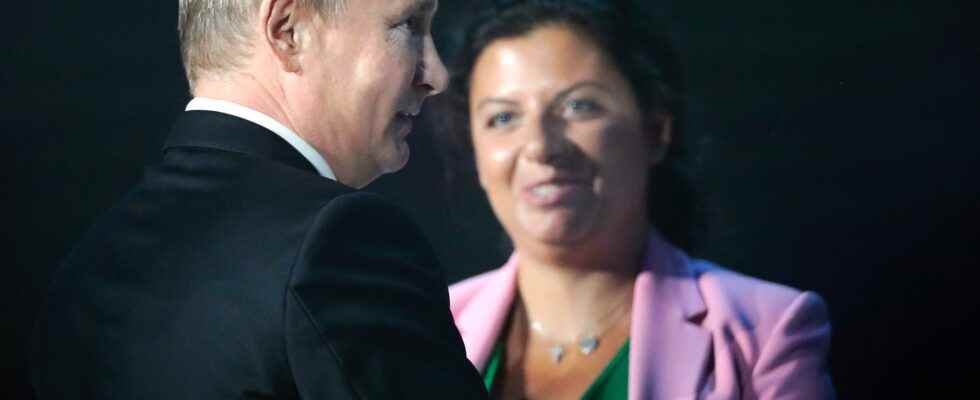Published: Less than 40 min ago
After the EU’s blocking of Russian state media, the content has instead started to spread via a number of other sites and accounts. To completely stop the Russian war propaganda in Europe is impossible, states an expert.
A measure that is “unprecedented”.
This is how European Commission President Ursula von der Leyen described the decision in March to cut off access to the state-controlled Russian media outlets RT and Sputnik in the Union. The aim was to prevent the Kremlin’s media machinery from “spreading lies to justify Putin’s war in Ukraine and so divide” in Europe.
The exceptional ban applies to all forms of channels, both television broadcasts and websites and social media.
The decision has reduced the reach of Russian state media in member states as broadcasting licenses have been revoked, websites have disappeared from search results and platforms such as Facebook, Twitter and YouTube have blocked accounts. But shortly after the ban came into effect, copies of RT’s stopped sites appeared at new addresses.
Harder to reach
And several such have still been able to be reached within the EU. The London-based think tank Institute for Strategic Dialogue discovered in a study in July twelve accessible sites that were exact copies of RT’s German- or Spanish-language sites – and whose IP addresses or other data showed direct links to the media organization. Another five such mirror sites located on servers unrelated to Moscow were discovered.
In addition, over a hundred sites were found with aggregated news content taken, among other things, from the Russian state media.
On social media, RT content has also been able to continue to spread from other accounts, and video material has been able to be republished via other users after the RT tag has been removed.
– It has probably been understood from the EU’s side that it will not be possible to completely remove this content. But it has become more difficult to achieve it, and the ban has a symbolic weight, says Ola Svenonius, researcher at the Total Defense Research Institute (FOI).
– But of course, those who want to find alternative sources will find them anyway.
Many new sites
At the same time, there is a flora of other types of sites that spread misleading information about the war in Ukraine. The New York-based company Newsguard, which maps disinformation online, has identified 250 such sites in a recent report. About half are in English and the rest in other major European languages. Some of them present themselves as independent think tanks or news sites.
Many of them have appeared in recent months. In some cases, it seems to be so-called dormant sites, which previously built up a following with the help of a completely different type of content, only to then suddenly start promoting Moscow’s narrative when the war broke out.
Ola Svenonius points out, however, that the Russian disinformation work has been going on for a long time and that the Kremlin probably did not make any major extra efforts to reach a wider audience in Europe after the EU ban.
– The Russian security apparatus is strained right now in several different ways.
– There is a cost estimate here. If this work were completely ineffective, it would not take place. But if you were to put your full energy into it, we would probably see more than this.
“Bad gut feeling”
The EU’s ban has also sparked debate about media freedom.
The decision is based on the conclusion that RT and Sputnik are state tools used to distort the truth and threaten public order and security in the EU.
Among the critics is the European Federation of Journalists (EJF). “Fighting disinformation with censorship is a mistake,” the union wrote in a statement in March. A better strategy to defeat those who want to manipulate is to support independent journalism, promote a pluralistic and professional media landscape and spread knowledge about source criticism, according to EJF.
Ola Svenonius believes that it is important that the debate continues.
– It is problematic to ban media companies.
– Purely crass, however, these channels are used as part of a kind of warfare both against Ukraine but also against Europe as a whole, he says.
